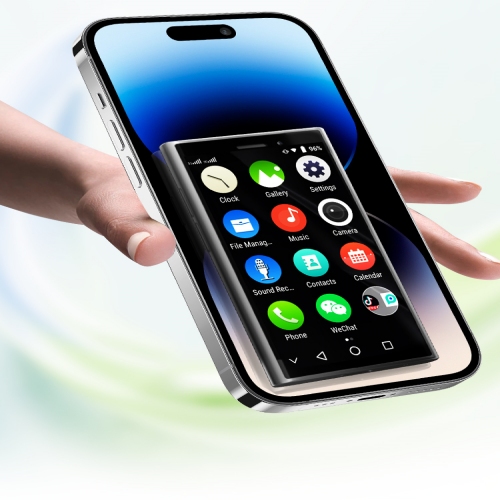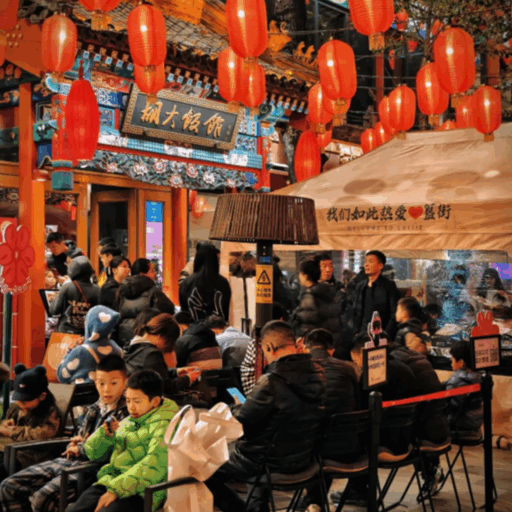Like no other, Shanghai has located itself uniquely on modern geography’s map. It is China's financial center and a city known for its rich culture. Every traveler is bound to create great memories here. Shanghai is easily recognizable for its skyline. Most megapolises feature a dense cluster of skyscrapers. The Chinese jubilantly display the dazzling Oriental Pearl Tower and the hawker-filled Bund. All these reveal aspects waiting to be explored. Packed with countless attractions, Shanghai offers endless fun, revealing stunning new views at every glance. You'll embark on an extraordinary journey with this travel guide as you discover must-see places, local delicacies, and exclusive practical travel tips. Get ready to explore the modern heart of China.
What Are the Must-See Attractions in Shanghai?
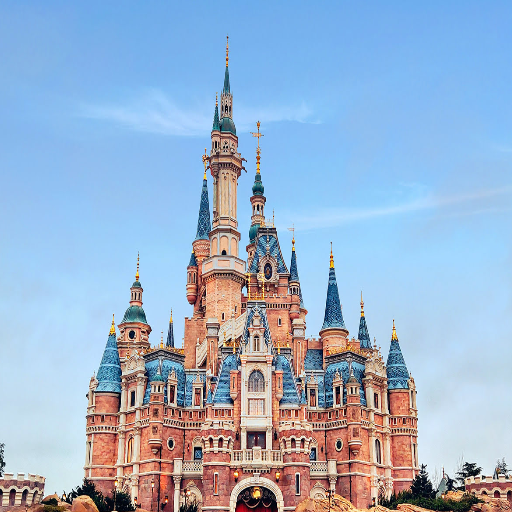
Rambles Along The Bund: A Walking History
A walk along the Huangpu River will lead you to Shanghai’s iconic architectural masterpiece, The Bund (Waitan). The Bund offers a fascinating one-mile promenade that reveals Shanghai's history and trade prosperity, with beautiful colonial structures on one side of the river and modern skyscrapers on the other. The breathtaking union of neoclassical and Art Deco structures built during Shanghai's golden era in the early twentieth century serves as a relic of the city’s former glory as an international trade and cultural center.
The architectural landmarks include The Customs House, famous for the clock tower, and the Shanghai Pudong Development Bank, a symbol of wealth combined with history. It’s magical walking the Bund promenade in the evening when the skyline shines in gold, enveloping everything in the vibrant futuristic glow across the river. The Bund has something to offer everyone, whether it's historical architecture, ferry rides, or the lively atmosphere, while showcasing the constant shift in society’s ambitions intertwined with history.
Must-Visit Museums in Shanghai for All Tourists
In Shanghai, you'll find some of the world's best museums, along with a rich collection of artifacts, art pieces, paintings, and sculptures. These not only show us the history but also the evolution of science, art, and culture of people in the region. As a tourist, these are some of the best places to visit in Shanghai, and they will be thoroughly enjoyed by one and all:
1. Shanghai Museum: Located in People’s Square, the Shanghai Museum is dedicated to ancient Chinese art and culture. This excellent museum is home to over 120,000 treasures, including bronze and ceramic pieces, calligraphy and seals, jade carvings, and Ming and Qing dynasty furniture with precious rotary cutting pieces. The famous architectural landmark of the museum copies a modern 'ding' (cooking pot) vessel and contains more than 40,000 works of art from early China.
2. China Art Museum: The eye-popping scarlet building, originally the Chinese Area Pavilion at Expo 2010, houses the China Art Museum, which features both modern Chinese art and relics from the past. The China Art Museum also displays superb works of painting by distinguished Chinese painters, alongside the "Along the River During the Qingming Festival" painting by Pan, China's famous Multimedia Painting. The China Art Museum exhibits seasonal works, meaning that there is always something new for tourists.
3. Shanghai Science and Technology Museum: This large-scale museum is a family-friendly attraction, hosting Rainforest Adventure and Light of Wisdom, among other engaging exhibits. To add to this, the museum is equipped with a space exploration, robotics, and environmental science center. This museum, in particular, allows people of all backgrounds to enjoy the wonders of science.
4. Shanghai Jewish Refugees Museum: The Hongkou district hosts a new wing of the museum, where visiting tourists can learn about the Shanghai Jewish Community, the first group of Jewish refugees to escape Nazi Germany Forces in 1939. Through the use of photographs and artifacts, visitors are educated on events through personal narratives and accounts. New memorial features are present, outlined in the shape of the old monument wall, honoring strength and unity.
5. Long Museum (West Bund): The Long Museum on the West Bund is a one-of-a-kind location for enthusiasts of contemporary and modern art. Expect to be wowed by the sleek aesthetic and stunning river views while exploring classical Chinese art, modern pieces, and contemporary global works, all from one striking collection. The museum resides under art lovers Liu Yiqian and Wang Wei, which only adds to the personal touch.
Every one of these museums encapsulates the mix of ancient history and modern advancement that defines Shanghai's ever-evolving character. Shanghai is a global cultural hub, and its museums serve as a reflection of its multicultural splendor.
Overview of Shanghai’s Skyline and the Tower
The skyline of Shanghai is riddled with skyscrapers, pavilioning the city’s astounding growth in tourism and global branding. The heart of this remarkable shift is the economic and cultural powerhouse, the Lujiazui district in Pudong, which hosts the world’s tallest architectural masterpieces, including Singapore’s Shanghai Tower. Standing 632 meters (2073 feet) tall, Sharpai Tower is the tallest building in China and the second tallest in the world. A feat in engineering, it also represents China's enduring symbol of sustainable technology.
Adding to the Shanghai skyline is the Shanghai World Financial Center, distinguished by its trapezoidal aperture near the top, which serves both structural and aesthetic purposes. At 492 meters (1,614 feet) tall, it features offices, shopping centers, and an observation deck offering stunning city views. Equally distinctive is the Jin Mao Tower, marking the skyline with its steeply tiered silhouette inspired by traditional Chinese pagodas.
Complementing these structures is the Oriental Pearl Tower, a favorite landmark of Shanghai. Although it does not fit the definition of a skyscraper, its design makes it equally iconic. Its spherical design makes it easily distinguishable along the Huangpu River. An array of newer skyscrapers, along with the previously mentioned towers, makes a statement about Shanghai's advanced development and aspirations on the global agenda. This beautifully diverse skyline demonstrates the balance of history and innovation in the city’s narrative.
What Are the Best Travel Tips for Visiting Shanghai?
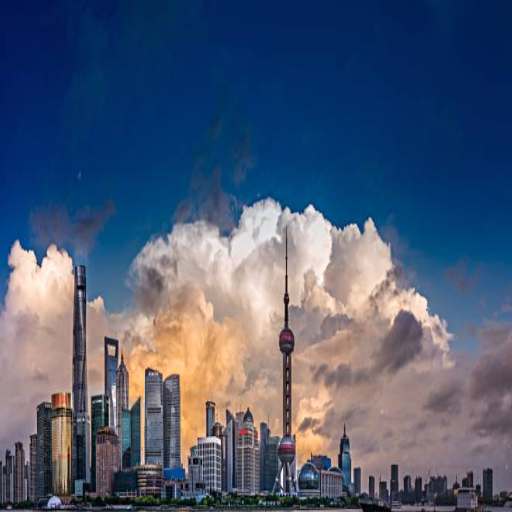
Essential Shanghai Travel Tips for First-Time Visitors:
To enjoy the iconic and marvelous Shanghai skyline on your first visit, it's critical to plan. Before your journey, get familiar with the city’s transportation infrastructure. The Shanghai Metro is the cheapest and fastest option for tourists, so make sure to get a rechargeable Public Transport Card suitable for metro, buses, taxis, and even ferries.
Beating Shanghai’s accommodation hotesses who provide luxury hotels or several restaurants are budget-friendly hostels. For round-the-clock connected day tours, the Bund, the Former French Concession, or People's Square are worth a visit. They deliver expected ease, alongside varied experiences of the city’s multicolored history and culture.
While some tourists in central urban areas take credit cards, they also carry cash for smaller shops, often found in street markets like the Yuan Market. Also, be ready to put in the effort to learn some Mandarin. It won’t set you back too much, and ‘xiè xiè’ will be positively remembered.
Finally, don't hesitate to try out local delicacies! Shanghai’s culinary world ranges from the internationally acclaimed Xiaolongbao (soup dumplings) to Jianbing (savory crepes) that can be found on street carts. To get the most out of the Shanghai experience, make sure to have menu-reading apps or translation tools for hassle-free restaurant navigation. All of these tips will ensure that your Shanghai journey is unforgettable and enriching.
How to Navigate Shanghai Transportation?
Visitors will find out firsthand why Shanghai has been rated among the world's few cities with the best and most advanced modern infrastructure. The city is served by one of the world's longest metro systems. In Shanghai, the metro covers huge distances, spanning eighteen lines and a thousand kilometers in length. The service is always fast and clean. The costs are low and expect to pay from ¥3 up to ¥9. The Shanghai Public Transport Card is a handy card that serves not only as a ticket for the metro but also for all public transportation. Money can be loaded into it, and it works on all forms of public vehicles.
For shorter distances, traditional taxis can be hailed easily, but ridesharing services like Didi are more convenient and usually cheaper, especially for Mandarin-challenged travelers. While taxis are available most of the time, having your destination written in Chinese can help avoid confusion. Buses are also cheaper, but less visitor-friendly due to the over 1,000 routes with mostly Chinese signage.
If you are looking for a more relaxed and spectacular ride, ferry trips across the Huangpu River not only provide an alternative way of traversing between Pudong and Puxi districts, but also offer remarkable views of Shanghai’s skyline. Traveling in Shanghai can be easy and less encumbered for anyone with the right planning, and a busy city is well served with public transport options.
Understanding the Local Culture and Customs
The culture of Shanghai captivates its visitors by showcasing both modern city life and traditional Chinese roots simultaneously. Shanghai is deeply known as the Pearl of the Orient and affectionatly referred to a pearl of belt and road initiative. While there is globalization, local customs also embrace sharp local business practices. One of the most important pieces of understanding a new culture is that local respect is significant and is often mastered through social interaction. For instance, the proper use of elders' titles and their polite greetings are forms of Chinese culture.
Legends dictate its end with unique Chinese cuisine, including mooncakes, and the Festival; this also helps define its identity. As entertaining as the Festival of Mid-Autumn is in this stylish occasion, sailors hung up colorful decorations. Lanterns are one of Shanghai’s vibrant cultural celebrations, and they are also a part of culture throughout festivals, providing a summery taste of real Chinese culinary tradition all over the country. The festival was blended with song and unparalleled shared colorful decorative goodies like mooncakes.
Furthermore, the art and architectural features tell us about Shanghai's history of development. The city has influences like the classical Chinese Yuyuan Garden, as well as the European-style architecture of The Bund, showcasing a blend of modern and historical cultures. When you explore the variety within Shanghai's cultures, you start to understand the essentials of life in Shanghai and its people’s values even more.
What Are the Best Places to Dine in Shanghai?
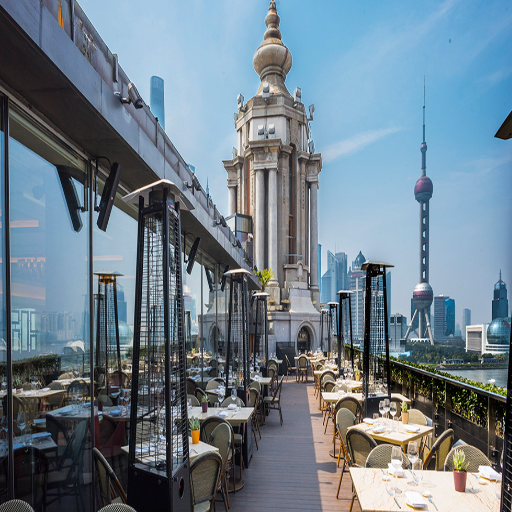
Best Restaurants for Authentic Chinese Cuisine
Shanghai has no shortage of phenomenal restaurants that specialize in Chinese cuisine. Shanghainese food lovers should not miss Jesse Restaurant (Ji Shi), famous for its classic braised pork belly and freshwater shrimp. Also, try Fu 1088, which adds its spin on the local gem in a stunning, elegant villa setting.
For Authentic dim sum, do not miss Yu Yuan Tea House, located near the Yuyuan Garden, where you can find both mouthwatering food and a culturally rich setting. For Shanghai cuisine and other regional specialties, Lost Heaven also serves tantalizing dishes associated with Yunnan Province, which captivate many locals and visitors. With these options, dining in shanghai becomes easier and an adventure.
Finding Local Street Food in Shanghai
It’s easy to get lost in Shanghai’s streets, but they are home to some of the best-tasting street food that's authentic to the region. If you're looking for a warm bite to eat, Wujiang Road Pedestrian Street is famous for shenjianbao and scallion pancakes. Yunnan South Road is also a must-visit as it serves tofu pudding and braised noodles. If you want something more mouthwatering, head to Shouning Road and grab a seafood skewer or the ever-famous crayfish.
Those venturing towards Huanghe Road can find seafood xiao long bao paired with cold tangy noodles. Shouning Road on the other end serves warm soy milk with traditional youtiao, also known as fried dough sticks. These beautiful streets serve as a blend of modern and ancient street food styles that collide with history and Shanghai’s vibrance on each corner, waiting to be uncovered.
Dining Bund Shanghai: A One-of-a-Kind Experience
The Bund waterfront offers stunning views of the Huangpu River, engaging historic architecture, and some of Shanghai’s world-famous restaurants. The restaurants around the promenades provide international as well as local delicacies. Mon on the Bund is one of the lavish restaurants in the Huangpu area, serving European-style cuisine alongside breathtaking views of the Huangpu River. Modern Chinese restaurants like Hakkasan Shanghai serve Cantonese cuisine with a dramatic twist. Casual diners are also welcome to relax at bistros and cafes. Small artisanal desserts and fusion small plates are also offered throughout the café.
Dining along the Bund, restaurants indulge guests with terraces that give panoramic views of the deep blue sky along with Shanghai’s skyline. These elements make dining along the Bund unforgettable. Combine expertly curated wine lists with exceptional service to create the best and most compelling dining adventure. The Bund reflects Shanghai's cosmopolitan spirit with a splendid blend of innovation and local traditions.
Where Should I Stay When Visiting Shanghai?
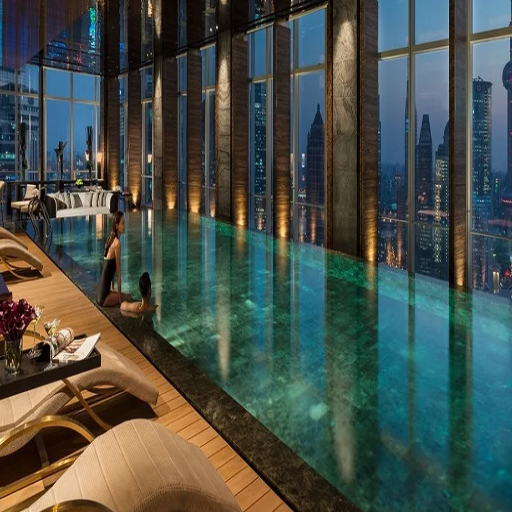
Best Hotels in Downtown Shanghai
The hotel in Downtown Shanghai offers many luxurious hotels with first-class services and accommodations that would ensure a remarkable stay for guests. First on this list is The Peninsula Shanghai, which serves as a centerpiece of sophistication featuring landmark views of The Bund and the Huangpu River. As an iconic property, The Peninsula Shanghai features spacious, Art Deco-inspired rooms with oversized windows, an award-winning spa, and multiple fine dining venues.
An equally modern yet historic option is the Fairmont Peace Hotel, known for its splendid service and excellent location. The Fairmont Hotel offers a remarkable experience with its lavish interiors and an exquisite menu at The Jazz Bar, which features daily concerts. The Peace Hotel boasts stunning panoramic views of the Bund and a dignified architecture that blends effortlessly with indulgent hospitality.
If contemporary is what you're looking for, The Puli Hotel and Spa is a calm city sanctuary located in the bustling Jie'an District. Surrounded by greenery, the Puli is also known for its aesthetic, Cali-modern architecture, infinity pool, and a Michelin-starred restaurant.
At last, the JW Marriott Marquis Hotel Shanghai Pudong stands out as a fine choice for tourists looking for cutting-edge technology and regal style. Its prominent location and reasonably priced accommodation make it an extraordinary place to stay for both business and leisure travelers.
Whichever of the listed options you pick, these hotels in the heart of Shanghai will, without a doubt, transform your stay by seamlessly integrating the highest level of hospitality with the unrivaled life of the city.
Budget-Friendly Hotels In Shanghai VS. Luxury Hotels
When it comes to Shanghai, the choice between luxury and budget accommodations depends on your travel objectives, personal tastes, and budget. The Peninsula Shanghai and Ritz-Carlton Pudong are two hotels in the city that hold a reputation for their lavish offerings, including Michelin-starred dining, personalized concierge service, and luxurious spa services. Such lavish hotels are usually located in prime places, allowing guests to enjoy stunning views of The Bund or The Lujiazui skyline.
In Shanghai, inexpensive places to stay are designed to provide the basic level of comfort that travelers demand without digging too deep into their wallets. Common choices include boutique hostels, mid-range hotels, and capsule hotels. These are typically clean and orderly, offering free Wi-Fi, shared kitchen facilities, and convenient access to transport hubs. For instance, Hanting Hotel and Jinjiang Inn offer travelers a good selection of economical accommodations.
Luxury accommodations may serve to pamper their guests, but cheaper ones allow tourists to appreciate the city's rich culture for a lower price. Depending on your needs, every option guarantees exposure to Shanghai's beautiful blend of modern and traditional culture, as well as high-end and local, authentic charm.
Picking The Right Hotel Location: Pudong vs Puxi
Knowing the characteristics of each area can help you decide better between Pudong and Puxi while planning your stay in Shanghai. As one of the most visited districts in Shanghai, Pudong is home to its modern sleekness and architectural marvels, such as the Oriental Pearl Tower and Shanghai Tower. This district is ideal for business travelers due to its proximity to the financial district and high-end international hotels. Plus, Pudong is home to the China Art Museum, Senty Park, and several contemporary shopping malls that offer a wide range of designer brands and attractions.
Puxi, on the other hand, is known for its vibrant and culturally diverse historical scene. It houses The Bund, a waterfront area with colonial buildings, and Nanjing Road, one of the busiest shopping boulevards in the world. Puxi is the richest in traditional residential areas, charming small shops, and delicious street food, meaning it captures the local spirit of Shanghai. It beautifully blends old Shanghai with modernized amenities.
Both Pudong and Puxi offer diverse experiences for travelers. If you want fancy restaurants, trendy places, or convenient business travel, Pudong is your pick. On the other hand, if you wish to experience rich history, culture, and traditional local food, Puxi will better suit your needs. Both areas also display the diversity and energy of Shanghai, guaranteeing a memorable trip.
What Are the Visa Requirements for Traveling to Shanghai?

Visa Requirements for Foreigners Travelling to Shanghai
Traveling to Shanghai comes with its unique visa requirements, which dictate the procedures you need to follow. Foreign visitors are generally required to obtain a Chinese visa before arrival. For tourism, the most widely accepted visa is the Tourist Visa (L Visa). This visa caters to foreign nationals visiting China for recreation, sightseeing, or to visit relatives. Usually, it has a maximum duration of thirty days, which can be extended in limited, exceptional cases.
Business travelers generally use the M Visa, which covers those traveling for trade and commercial purposes. If you are coming to China for expos, deal negotiations, or client meetings, then this is likely the visa you’ll need. For individuals wishing to study or work in Shanghai in the long term, they will need to obtain a Student Visa (X visa) or a Work Visa (Z Visa), respectively. It is vital to use the proper class of visa, as penalties of some form can be incurred by attempting activities outside of visa sponsorship.
Also, if you are traveling to another country through Shanghai, you might qualify for visa-free transit. Citizens of certain countries can enjoy a 144-hour visa-free transit policy, which allows for short stays in Shanghai without a full visa, provided that travelers have a confirmed onward ticket. As with any policy, check the most recent guidelines; visit the Chinese embassy or consulate in your area to confirm the visa rules before planning your trip. Taking steps to ensure proper compliance will help avoid unnecessary complications and make your journey in Shanghai unforgettable.
How to Apply for a Visa to China
To get a visa for China, my first task is to collect the requisite documents, which commonly include a passport with a minimum of six months validity, one recent passport-sized photograph, the completed visa application form, along with supplementary documents based on the visa type I’m applying for, such as an invitation letter for business visas or a travel itinerary for tourist visas. It is crucial to cross-check the prerequisites because they vary depending on the objective of my visit.
As soon as I have all my documents in order, I go to the Chinese embassy or consulate in my area (or an authorized visa application center, if one is available) to submit my application. I make sure to pay the relevant costs and provide the required information, so I don’t cause any delays. If I have any questions, I make sure to reach out to the consulate or center.</br> Processing times can vary greatly depending on the number of applications being handled, so I make sure to submit my application well ahead of my intended travel dates.
My primary focus is on waiting for my application to be approved. I also keep track of requests for further information. Once my visa is approved, I do a final check of the documents to ensure my travel dates and everything else are correct. I try to stay constantly organized and informed throughout, so I can provide a smooth process and travel without issues to my destination.
Frequently Asked Questions (FAQs)
Q: Which places in Shanghai are worth visiting?
A: Some of the must-visit places in Shanghai are the Oriental Pearl Tower, Yuyuan Garden, Nanjing Road, and the Bund. There is stunning architecture at all of these places, and they also offer a lot from China's rich culture.
Q: How can I navigate through Shanghai?
A: For easy navigation through Shanghai, you may use a map or any smartphone app to locate the areas you plan to visit. Shanghai has one of the most efficient and well-established metro systems, which is also popular among travelers. Other methods of traveling across the city include public buses and taxis.
Q: What are the best seasons and months to visit Shanghai?
A: March to May and September to November are the best times to visit Shanghai as temperatures during these months are mild and pleasant. Winters are moderately cold, while summers can get hot and humid.
Q: Are there any suggested protocols for the locals and tourists regarding the cultures of the guests?
A: It would be advantageous to learn basic communication infinities in Mandarin for polite interaction in Shanghai. As well, one must consider proper etiquette, such as greeting a person with a smile and using both hands when giving or receiving something.
Q: What can be done so that a tourist in Shanghai doesn't become a victim of fraud?
A Scam alert should include overly amicable strangers offering unsolicited help or tours, so be on the lookout. Use only licensed transport services and trust-funded offers, while also being aware of some typical scams in the area.
Q: In which way can a traveler move around the city of Shanghai?
A: The buses, metro, as well as taxis and motor taxi services are all examples of transport that can be found in Shanghai. The metro is undoubtedly the best transportation. It's easy and quick to get to the city center.
Q: Which of the travelers to Shanghai have visited popular restaurants in the city?
A: Shanghai is famous for housing some exciting restaurants that serve both oriental and Western foods. Places that you simply cannot forget to visit are Din Tai Fung Restaurant for their dumplings and smaller local shops for surprising Shanghai food. So visit other parts of the city that serve a variety.
Q: What is the significance of the Bund in Shanghai?
A: The Bund, showcasing the city’s history and its modern development, is famous in Shanghai due to its historical and architectural significance. Its waterfront area marks the beginning of the Huangpu River. Tourists popularly visit it while locals stroll there, making it one of Shanghai’s top destinations.
Q: How can I visit nearby cities like Suzhou and Nanjing from Shanghai?
A: Shanghai offers easy access to neighboring cities like Suzhou and Nanjing, which can be conveniently reached using high-speed trains available from either Shanghai's Hongqiao or Shanghai Railway Station. These trips are comfortable and allow travelers to enjoy China’s rich culture and historical landscape.

